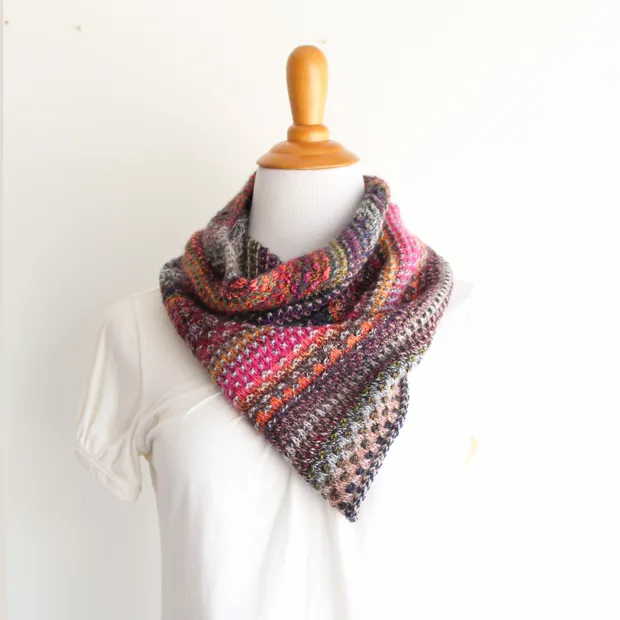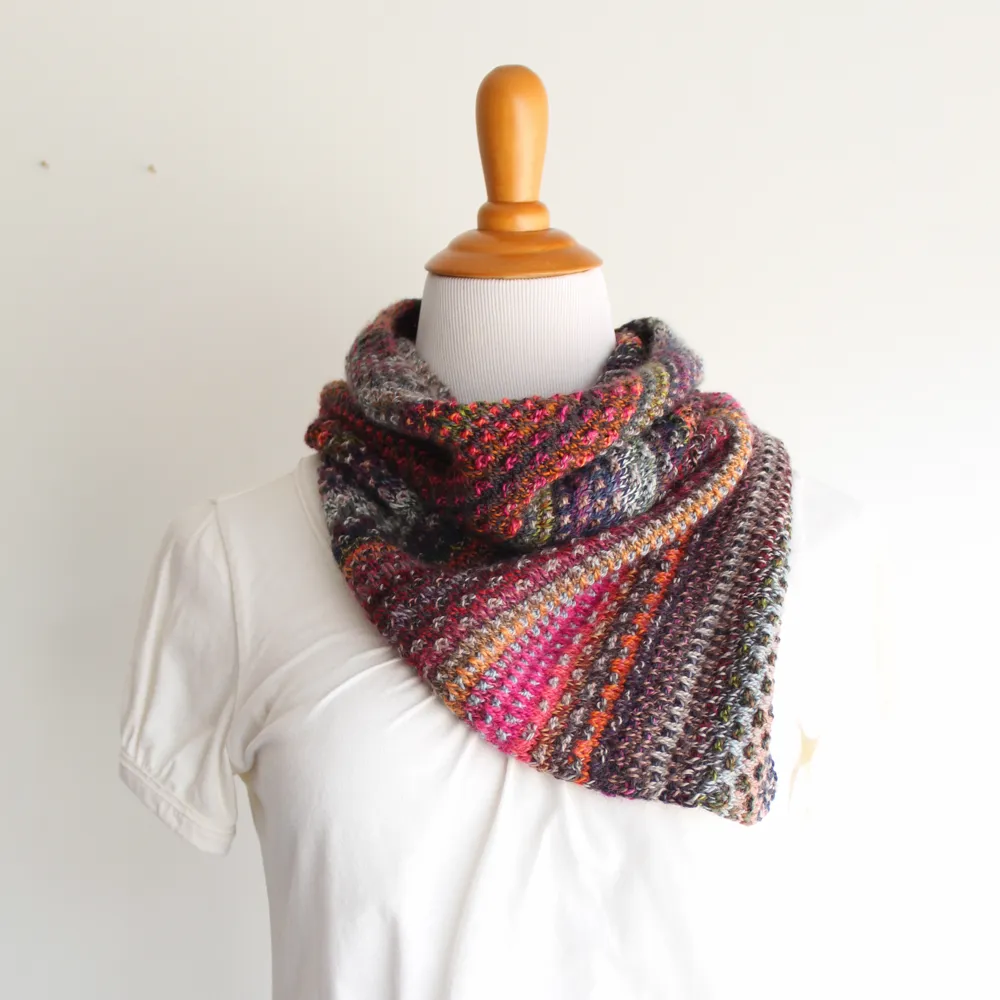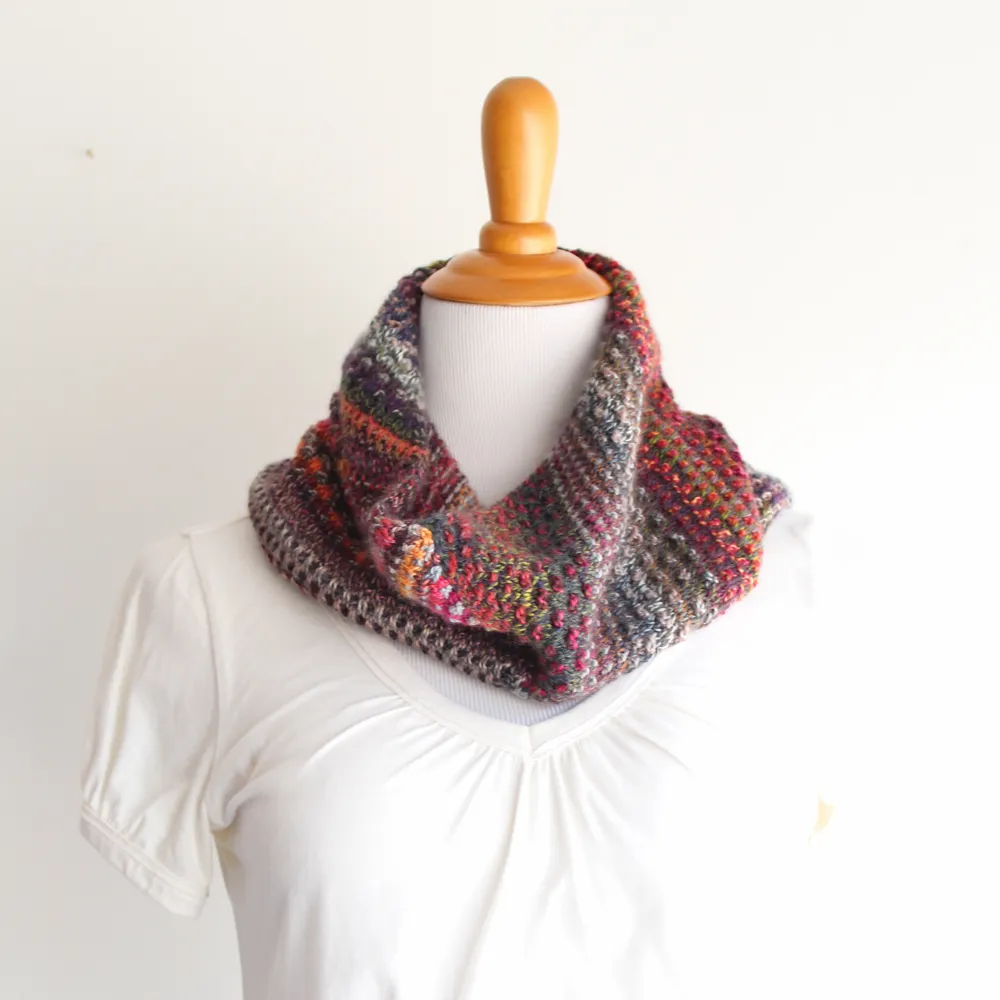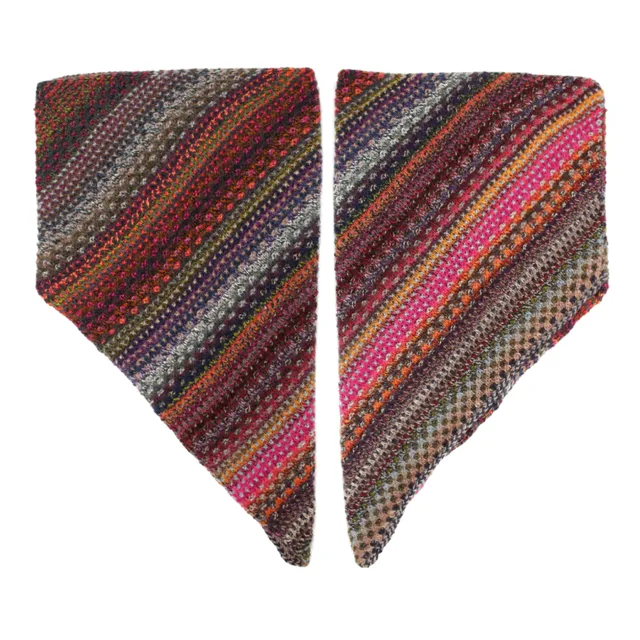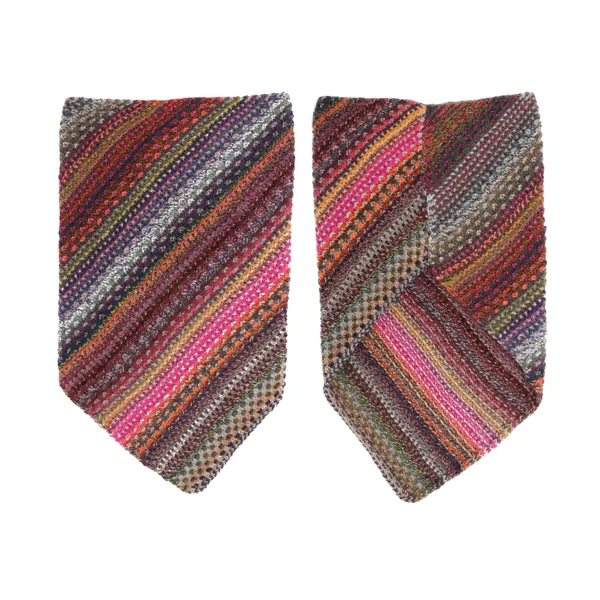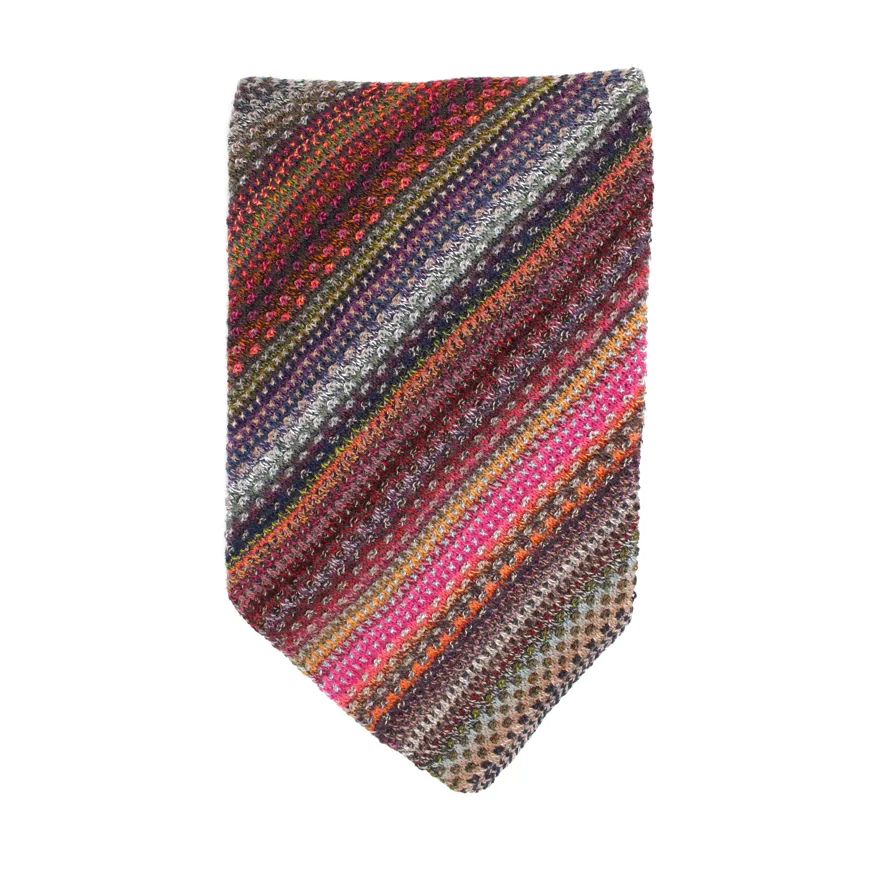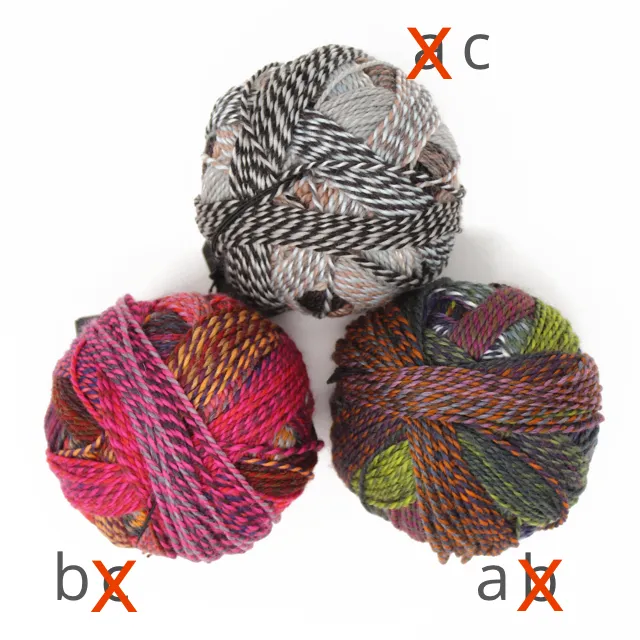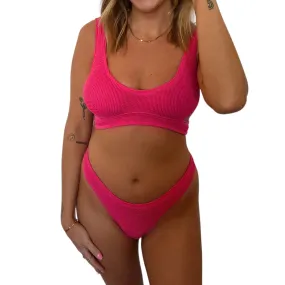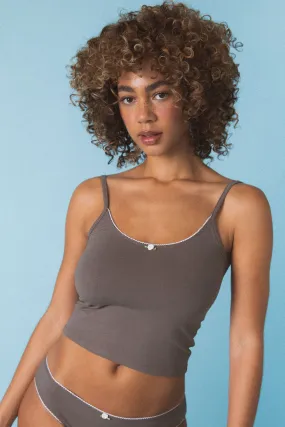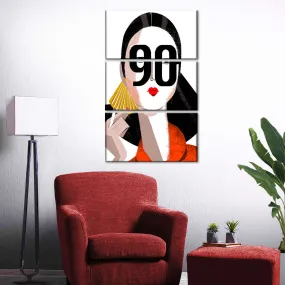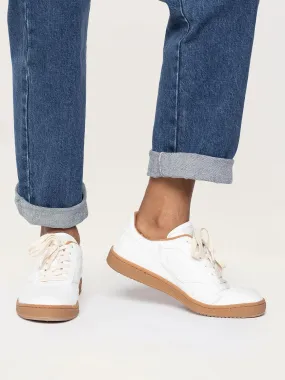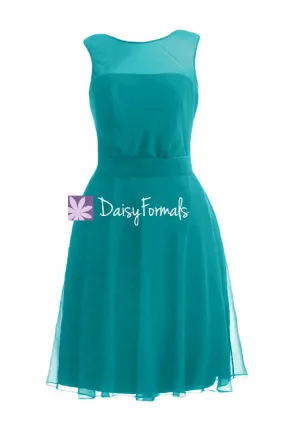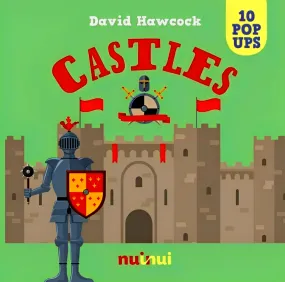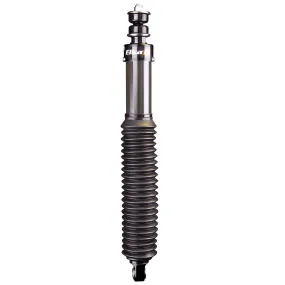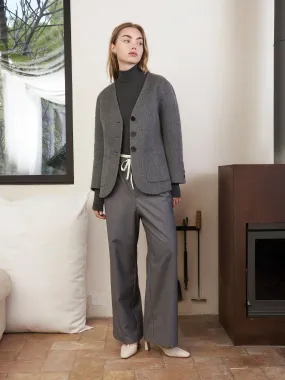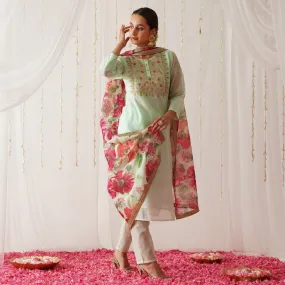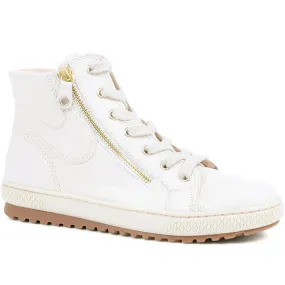Way back at the start of August , and I finally finished mine! I asked you if you thought I should try out someone else’s colours or go my own path, and I think everyone (including me) was in agreement that I should trust my intuition, so I did. I chose 3 colours that I thought would work, crossed my fingers, knocked on some wood, and set to work. At first I was thinking “I don’t know about this …”, but as the project progressed I saw what was taking place and it was AMAZING!
How I Chose Colours
The pattern is always alternating 2 colours: one works as a background and the other is the dots in the foreground. The background colour will stand out more than the foreground colour. I found that colours A & B ended up being the dominant colours, and C was used mostly for the foreground/dots.
- I picked three colourways that looked like the colours could work together. One had reds, one was neutrals, and the third was dark things and a bit of greens.
- One colourway was darkish (colour A, one was medium in its brightness (the red, colour B), and the last was lighter (the neutrals, colour C).
- My colours: A) , B) and C) .
An interesting thing … as I was working I realized that colours A & C . could also work really well with a cool colour for B, like the blue of or the green .
The Yarn’s Performance
was beautiful to work with and the finished piece looks and feels gorgeous. The designer, , has a sweater pattern named that can be made with the same yarn, and I would totally, unequivocally do it! Mowry suggests going down a size in the sweater pattern if you are between sizes, and I think that is perfectly feasible with because it stretched easily when I blocked it.
A Small Hack
The yarn was very, very soft, and will be absolutely no problem wearing against your skin. It comes in balls, and I found that rewinding them into cakes on a ball-winder made them easier to work with. I also used my old , which kept things more orderly. Since you’ll have 3 colourways going, I suggest using 3 different colours of pantyhose or .
The Pattern
The pattern wasn’t hard, but I did have to pay attention to where I was and keep track of my rows. To do this I used a row counter and made notations in pencil on my pattern. If you find that confusing you may want to put the info into a spreadsheet program to keep track row-by-row.
The stitch pattern is a slip stitch, and on a few occasions I had to tink my work a row or two when I wasn’t on the ball. It is not a project to do while distracted (ie. drinking).
Materials
: 3 balls (1 in each of 3 colours). We used A) , B) and C) .
3.75mm needles (circular or straight)
tapestry needle
Row counter (optional but useful)
Conclusions
The yarn was great, the pattern was great, the finished project was great! I recommend it and I would do it again.




